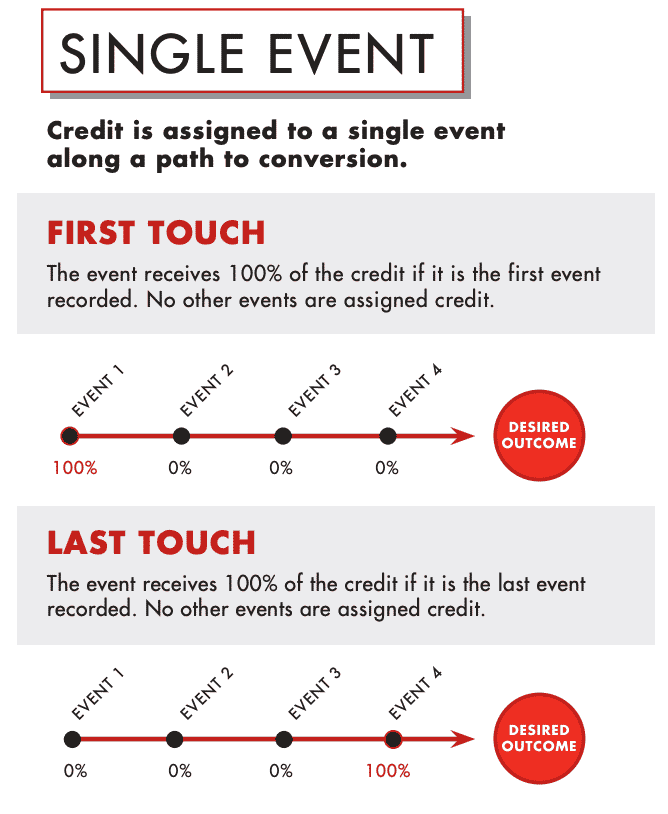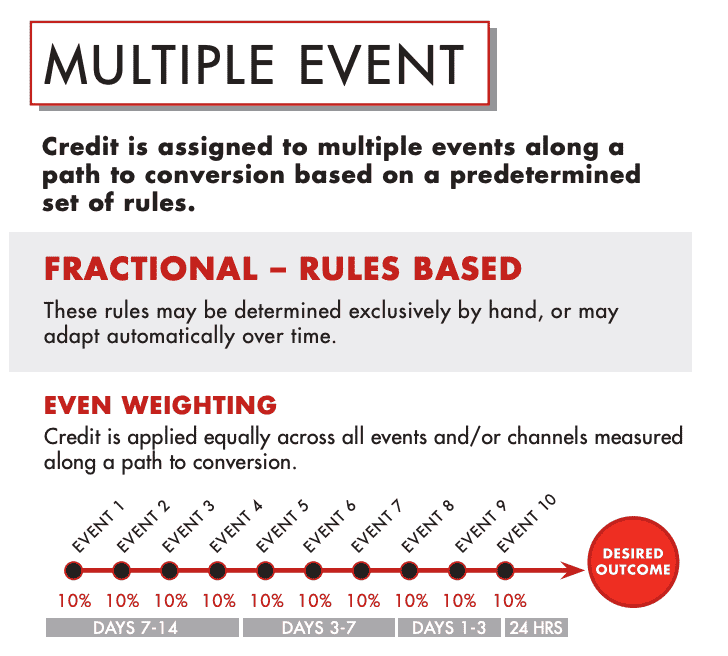The way people interact with brands in changing in light of COVID-19.
While eMarketer reported that advertising spending hasn’t seen a lot of decreases on the 12th of March, Out-of-home (OOH) advertising is likely to see a drop in performance and spend as more people are encouraged to stay home and away from large gatherings.
Attention has turned (more than ever before) to the TV and digital realms as people seek information, products, and services online to support a lifestyle spent mostly indoors.
This new consumer behavior will severely impact mix media models. OOH will have a much lower impact on the conversion funnel given decreases in travel, sports games, concerts and outside activities.
Marketers looking to stay ahead of the curve will want to rapidly adapt their attribution models to reflect these new changes in behavior. TV & Digital will likely play a more significant role than usual with more time spent at home.
The landscape today leans heavily on single event attribution—where marketers attribute most of the advertising value to channels at the beginning or end of the marketing cycle. Now is the time to adapt to multiple event attribution, taking into account the entire user journey across a variety of devices.
The landscape today: single event attribution
Attribution is the process of attributing value to a set of one person’s actions across different screens and touch points.
Most commonly, advertisers focus on single event attribution modeling, which attributes value to a single point in the user journey—either at the beginning, when they’ve just discovered a brand, or at the end, when they’ve made a purchase.

(Source: IAB’s Digital Attribution Methodologies)
This model is most effective outside of the digital world at the beginning of the user journey, when marketers ask themselves questions like:
- How many people saw my billboard?
- How many sports fans were at the event we sponsored?
- How many people ride the subway each day and were exposed to my transportation advertising?
Or, it’s useful at the end of the journey, when marketers ask questions like:
- Which retail outlet is selling the most products?
- Which e-commerce landing page is driving the most sales?
- Which email campaign led to the most event registrations?
As you probably started to imagine at the end of that line of questioning, online, this model starts to fall apart.
It’s easy to attribute pure branding or direct response marketing campaigns using a single event model, but online, consumers are likely interacting with your brand in multiple places before they’re making the leap to purchase.
How multiple event attribution can help you reach consumers at home more effectively.
As more countries seek to stop the spread of Coronavirus, more and more people are home doing their part. That means they’re watching television, streaming content from services like Netflix and HBO, and spending more time with their digital devices—everything from their phones to their home voice assistants.
There are even more digital touch points to consider in the consumer journey today, and in order optimize your marketing effectively, you’ll need to properly attribute each interaction a user has with your brand online.
As you find yourself asking where to attribute advertising budgets typically spent on activities like OOH campaigns, you’ll be looking to the digital channel that bringing you the most bang for your buck.
Naturally, you’ll look to the channel driving the most purchases.
Take this hypothetical fashion retailer as an example:
After taking a look at a single event attribution model, a fashion retailer might attribute more budget to search advertising, where their creatives targeting the search keyword “comfiest yoga pants” are driving the most amount of revenue.
So, they increase spend there, and over time, they’ll find that they’re reaching the same people over and over again because they’re not attributing enough value to their other channels—like discovery, display, video and social—which are filling their funnel with interested consumers in the first place. These channels are qualifying people interested in yoga, comfort clothes and other relevant topics.
This is just one example, but the general sentiment applies to verticals across the board—in order to increase purchases, you need to properly value the steps in the user journey that increase interest and engagement.
The simplest way to do this is a form of multiple event attribution called even weighing—providing the same value to every touchpoint from your search ads to your broadcast commercials. The IAB illustrates this below:

There are three other common forms of multiple event attribution, including time decay, U-shaped and algorithmic. These take into account the time between interactions with your brand, attribute more value to first and last touches, or algorithmically analyze each step in the user journey based on each user’s interest, respectively.
Not only would these models help our aforementioned fashion retailer solve their keyword problem, but it would also allow them to connect campaigns for consumers across a variety of devices—each purchase is now connected to the TV commercial they saw, the sponsored content that brand promoted on desktop platforms and the social media ads they interacted with on their mobile devices—all the way to searching for a product and making a purchase.
Tools to help you quickly apply multiple event attribution models.
There are a variety of tools out there that help marketers attribute value to different stages of their consumer journey. We’ve selected four that run the gamut from highly advanced marketing operations to teams who might just be getting started.
- Google Analytics 360. You can build attribution models right in your Google Analytics platform using Analytics 360, which provides insights for marketers to take actions like improving your website, creating tailored audience lists, and adjusting attribution models. Here’s how to change your Google attribution model.
- Nuestar. Their multi-touch attribution solution allows enterprise marketer to connect marketing activities holistically, and also provides predictive insights for those looking to get ahead of the curve.
- Segment. This tool makes customer data accessible for all teams.
- AppsFlyer. This tool focuses on attribution specifically geared towards app downloads and mobile activities.
Now is the time to adjust your attribution modeling for more advanced online activities. In order to make the most of your digital campaigns, you’ll need to assess the value of your digital marketing effectively, quickly and with room for quick adjustments as the world rapidly changes.